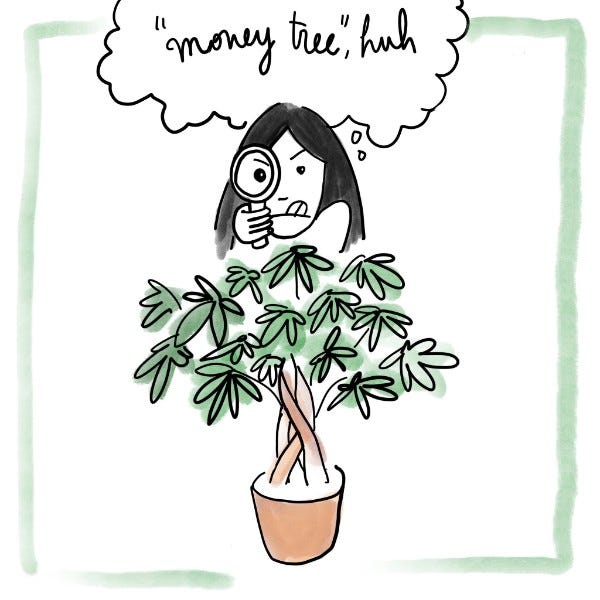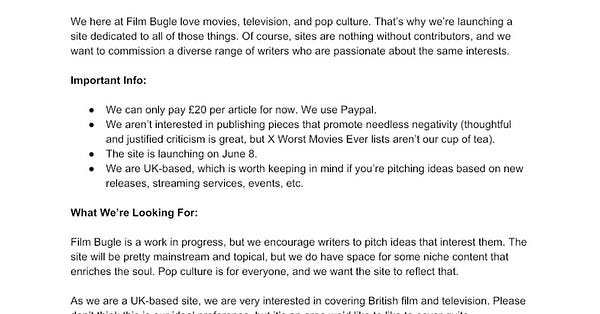 |
The last couple of weeks have been devastating for journalists. Last week alone there were hundreds of layoffs in newsrooms around the world, including Vice, Buzzfeed and the Atlantic. And, unfortunately, I’m sure more will follow in the weeks and months ahead.
When I got laid off from a staff role in 2017, I decided I didn’t want to find another in-house position only to potentially lose it or spend my days living in fear of that happening. So I went freelance.
Up until the pandemic, things were peachy for me. I was covering stories that mattered to me, working on fun projects with friends and generally living life on my own terms. Freelancing during the pandemic has been a different story. Editors are ghosting me, thousands of pounds worth of work has disappeared overnight and my mental wherewithal is at its lowest it's ever been. Nonetheless, I still prefer to work in this way because – at least for me – it does work.
I know that this is a moment of pause for so many people. If my DMs are anything to go by, lots of other writers are asking themselves if freelancing might be right for them. More specifically, however, I’ve been getting a lot of questions about starting a paid newsletter. Given that today happens to be the one year anniversary of me sending my first subscriber-only post, I thought it was worth sharing what I’ve learned about starting a paid newsletter.
Let’s start by talking about money. Publishing a paid newsletter does pay. Veteran journalist Matt Taibbi recently announced his departure from Rolling Stone to write his newsletter full-time. Emily Atkin’s climate change newsletter and Judd Legum’s Popular Information are their full-time jobs, along with scores of other writers on Substack.
As for me, I’m currently making about a third of my income from my newsletter. Which, I want to stress, is a conscious choice on my part. It has never been my intention to make my full-time income writing this newsletter. Like the writers who do make a full-time income from their newsletter show, it’s not only possible to do that, but also lucrative. Personally, I don’t have the risk appetite to put all of my business income in one basket like that.
Also, if I’m really honest, what happened to me when I lost my job continues to burn me. I will never forget being told that I was brilliant at what I did, but that decisions that came from above me meant I was out of a job. In that moment, I promised to no longer be beholden to someone else’s fragile business model. (And what a pile of sand the media is built on, but that’s for another time.)
And so a core business principle of mine is diversification. In the same way that before I started the paid newsletter I made sure I always had multiple clients, my goal is always for TPF to be one of many ways I make money.
What sets newsletters apart from other ways you can diversify your income as a writer (like copywriting, teaching or public speaking, for example) is that it’s scalable. I don’t think enough freelancers appreciate how valuable this can be for their businesses. This means you can grow your revenue without your costs increasing.
Put another way – as a writer who sells freelance stories to newspapers and magazines, you’ll eventually hit a wall of how many pieces you can write in any given week. When you publish a newsletter, you can increase your income by effectively selling more copies of that newsletter, not by having to write more newsletters.
This is empowering for a freelancer. Not only does a subscription model provide regular monthly income, but it also exponentially raises your earning potential. Not to mention how huge it is to have income that’s not reliant on antiquated systems like payment-on-publication or subject to late payments. At this point, the money my newsletter brings in is my most stable and reliable source of income.
So what’s the catch?
There isn’t one. But there is something really important you have to know about making money through a newsletter. The only way to make it work is if you treat it like a business.
Looking back on this day last year, I now realise it was the point at which The Professional Freelancer went from being an email I sent to random people on the internet to a reader-funded publication. It became a business and along with that came all the highs and lows of running one.
You have to market your newsletter, which means getting comfortable with selling; you have to do customer services, which means dealing with people who don’t like your product; you have to figure out how to price the thing, which is so emotionally fraught it’s enough to stop you from even attempting to go paid.
You also have to work out a strategy for monetising your newsletter. Substack is a great option because it’s a ready-made platform, but it comes at a cost (for what it’s worth, I do think the service these guys provide is worth a lot more than the percentage they take). But there are other ways to fund a newsletter (ads, brand partnerships and affiliate links, to name a few) and you need to find what’s going to work for you.
Paid newsletters are not the silver bullet that will fix the media's broken business model. But if they can help a few enterprising freelancers make a healthy, reliable income then sign me up.
The List
To celebrate TPF’s first birthday as a reader-funded publication, I’m offering the biggest discount I ever have: 50% off an annual subscription. That’s £45 for the tools and resources you need to get your freelancing business to where you want it to be
How To Grow A Resilient Freelance Business: While thinking about the future might seem daunting right now, the more sustainable your business is, the happier and healthier it will be. On Wednesday, May 27, I’ll be hosting an online panel to explore how to grow a resilient freelance business. We’ll cover how to delegate tasks and collaborate with other people and how to define a meaningful path for your “company of one” to thrive. Tickets available here
Burned out? On this week’s episode of the podcast, we chatted to Anne Helen Petersen, senior culture writer at Buzzfeed. Listen now
To celebrate The Professional Freelancer’s first birthday as a reader-funded publication and community, I’m giving away a free one-year subscription to one lucky freelancer. Head over to my Instagram for all the details.
“His work, though, reveals the weakness of a kind of resistance journalism that has thrived in the age of Donald Trump: That if reporters swim ably along with the tides of social media and produce damaging reporting about public figures most disliked by the loudest voices, the old rules of fairness and open-mindedness can seem more like impediments than essential journalistic imperatives.” Ben Smith’s been in the Media Equation job for two minutes and he’s already published some highly controversial pieces. The takedown of Ronan Farrow is no exception
Struggling to come up with new ideas? Might be time to rehash some old ones
“There are fewer companies and jobs around during a recession, which offers more incentive for people to go independent. These new freelancers will use their expertise to build audiences and revenue streams. The visibility and network they create will attract a flow of opportunities, bigger and better each time, even in a devastated wider economy.” I’m quoted in this great piece about the future of the knowledge economy
Calls for pitches
















